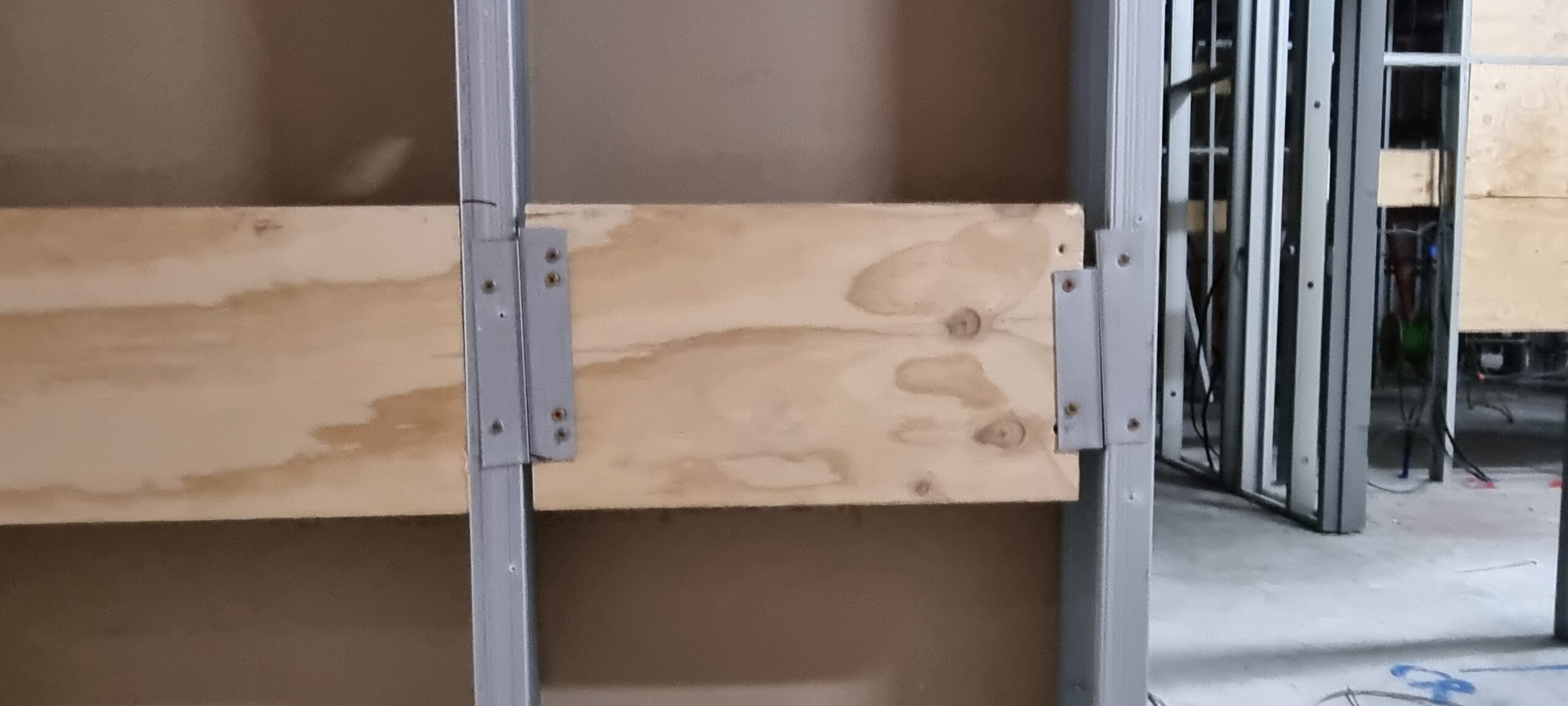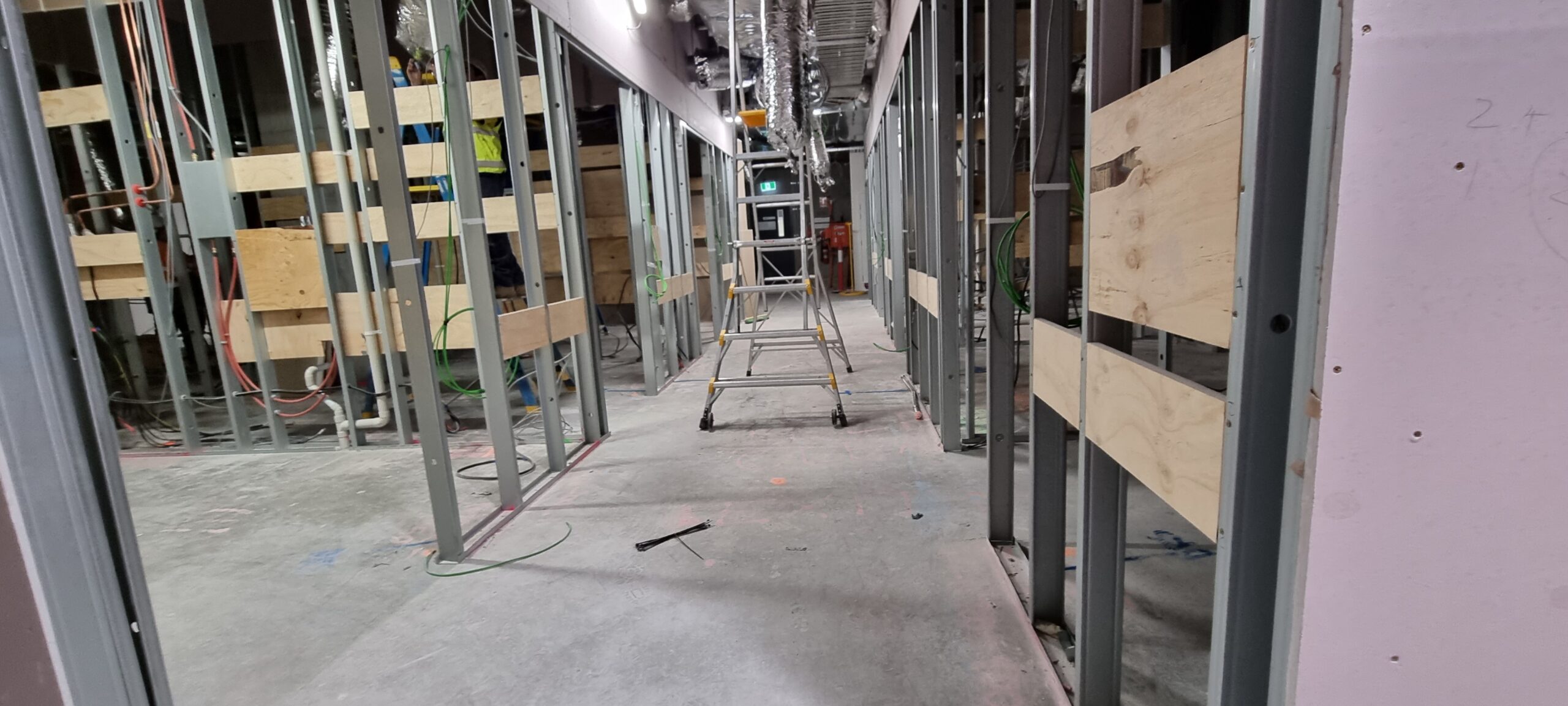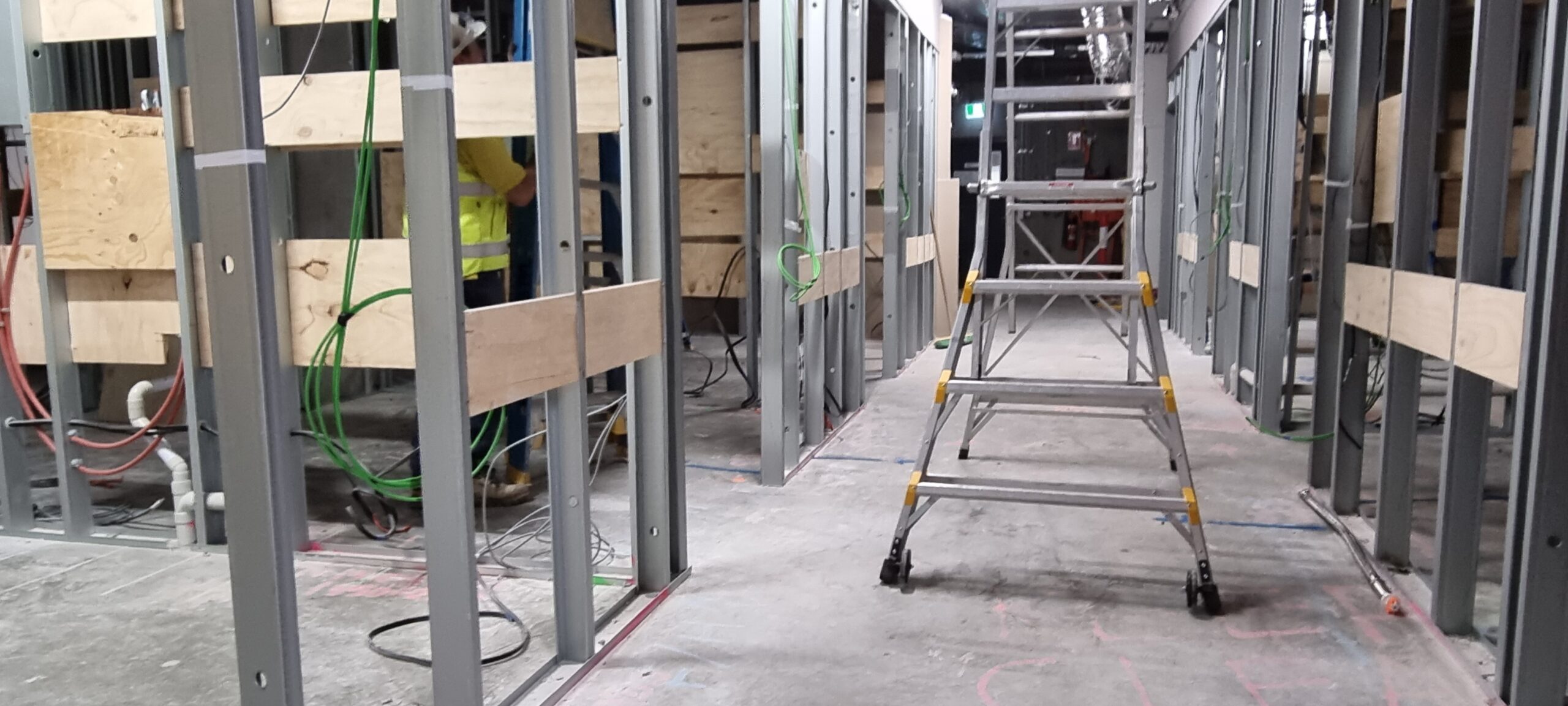
When Are Continuous Noggins Required in a Wall?




In hospital and aged care settings, the proper installation of fixtures and equipment is essential to ensure the safety and functionality of the environment. One important consideration is the need for continuous noggins within the wall structure. But when exactly are continuous nogging (or noggins) required, and what purpose do they serve?
To begin, let’s clarify what a noggin is. A noggin refers to a horizontal member, typically made of timber or steel, that connects between the vertical studs within a wall. Its primary function is to provide additional bracing and support to the studs. In some cases, additional continuous noggins are necessary to mount handrails, crash rails, and other fixtures, fittings, and equipment (FF&E) that need to be attached to the exterior of the plaster wall.
For the installation of crash rails and handrails, it is always recommended to include additional continuous nogging at the required mounting height. Typically, an 18mm plywood or similar material is used for the noggin, with a height of around 250-300mm. These continuous noggins are securely screw-fixed into the studs, ensuring a stable and reliable mounting surface for the crash rail or handrail.
One common question that arises is whether noggins are required for mounting corner guards. In general, noggins are not necessary for corner guards because, at the corner of every wall, there are vertical studs and a vertical steel angle on the exterior of the plaster. These elements provide sufficient substrate for securely fixing corner guards, eliminating the need for additional continuous noggins.
Another question often asked is why handrails or crash rails cannot be directly fixed to the vertical studs. The primary reason is that studs are challenging to locate once they are concealed with plaster. While it is possible to locate studs using a stud finder, it can be a time-consuming process, especially in larger areas.
Moreover, vertical studs are typically spaced every 400-600mm within a wall, starting from a wall corner or doorway with increments of 400-600mm in between. The first mounting bracket for a handrail generally cannot be fixed closer than 200mm to the wall corner or doorway due to the required start point gap and the size of the handrail return. This means that the first mounting bracket would need to be placed 400-600mm away from the wall corner or doorway, resulting in an overhang that is too large to adequately support the handrail.
In certain instances, particularly in small sections of a wall, there may be no intermediate studs present, making it impossible to achieve a solid fixing for a mounting bracket. This further highlights the importance of continuous nogging, as it provides a reliable and secure mounting surface for handrails, crash rails, and other FF&E items.
When it comes to the installation of fixtures and equipment in hospitals and aged care facilities, proper support and bracing are crucial. Continuous nogging plays a vital role in ensuring the stability and durability of mounted items. By understanding when and why continuous noggins are required, healthcare facilities can ensure the safe and effective installation of handrails, crash rails, and other FF&E, creating a secure and accessible environment for patients, residents, and staff.
